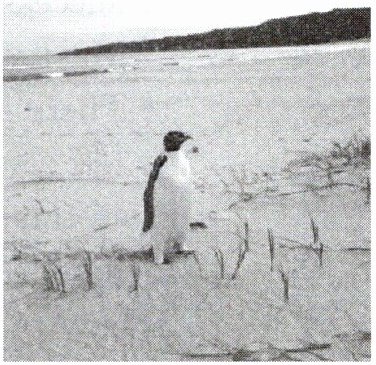五、阅读短文,回答问题
In November, 2024, an emperor penguin (帝企鹅) showed up in Australia. This was a big surprise! Emperor penguins are not usually found in warm Australia. They live in icy Antarctica, about 2 100 miles away.

The young penguin was found on a beach. It was in the town of Denmark. That is in Western Australia. It is probably (很可能) the first time an emperor penguin has travelled so far north.
Penguins are seabirds. They do not fly. They swim. Emperor penguins are the largest type of penguins in the world. They can grow over 4 feet tall. That is taller than most 6 - year - old children. An emperor penguin can also weigh 45 kg. That is more than most large dogs.
Aaron Fowler was one of the first people to see the penguin. He said the penguin was not shy. It tried to move on its stomach on the beach, thinking it was snow. But it just fell in the sand! It stood up and shook (抖动) itself off.
But how did the penguin end up in Australia? Belinda Cannell, a penguin scientist, said the bird might follow an ocean current (洋流). That is like a river in the sea. Ocean currents carry food to sea life. Penguins follow the current to look for food. The penguin may have followed a current that went farther north than usual.
Still, most penguins usually stay closer to home. A warm beach is a big change from sea ice! And we should pay attention to the unusual events. The animals may be at risk.
前 4 题每题的答案不超过 10 个词,第 5 题的答案词数不限。
1. Where was the young penguin found?
On a beach in the town of Denmark,Western Australia.
2. What does Paragraph 3 mainly talk about?
How big the emperor penguins are./What the emperor penguins are like./Emperor penguins' size.
3. What did the penguin mistake (误认为) the sand for according to (根据) Aaron Fowler's words?
Snow.
4. Why did the penguin come to Australia?
To look for food.
5. Why does the writer write the passage?
To ask people to pay attention to the unusual events.